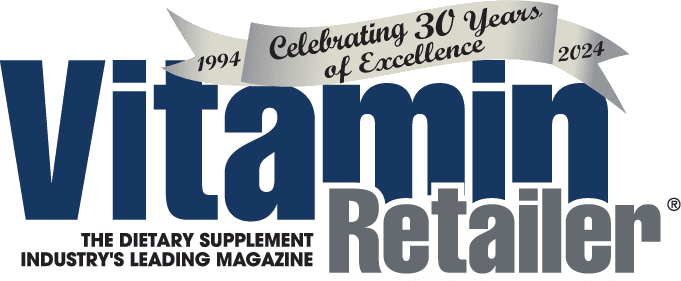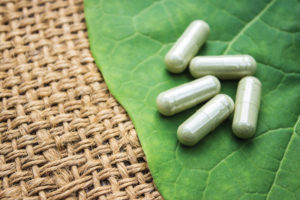Whether new entrants or old standbys, this market is defying expectations.
Panelists:
Abdul Alkayali, Vice President of Sales and Marketing, Longevity by Nature, Temecula, CA, www.longevitybynature.biz
Ramona Billingslea, Marketing Manager, Betsy’s Health Foods, Spring, TX, www.betsyhealth.com
Annie Eng, CEO, HP Ingredients, Bradenton, FL, www.hpingredients.com
Amanda Jepson, Senior Director, Marketing & International Sales, Biova, Johnston, IA, www.biova.com
Courtney Keller, Sales and Marketing Manager, Cogent Solutions Group, Lexington KY, www.cogentsolutionsgroup.com
Neil Levin, Senior Nutrition Education Manager, NOW Health Group, Bloomingdale, IL, www.nowfoods.com
Dan Lifton, CEO, Quality of Life Labs, Port Chester, NY, www.qualityoflife.net
Matt Marturano, Chief Science Officer, Vibrant Health, Shelton, CT, www.vibranthealth.com
Chris D. Meletis, Director of Clinical Education, Trace Minerals Research, Ogden, UT, www.traceminerals.com
Richard Passwater, Jr., Product Education Director, BioMinerals, Monroe, WA, www.naturalfactors.com
Marge Roman, Manager, Stay Healthy!, Las Vegas, NV, www.stayhealthylasvegas.com
Jolie Root, Senior Nutritionist and Educator, Carlson Labs, Arlington Heights, IL, www.carlsonlabs.com
Joseph Scirica, Director of Marketing, Natural Immunogenics Corporation, Sarasota, FL, www.sovereignsilver.com
The global market for bone and joint health supplements, which was estimated at $9.9 billion (U.S.) for 2020, is projected to reach a revised size of $14.7 billion (U.S.) by 2027, growing at a CAGR of 5.8 percent over the period 2020–2027. Joint supplements are projected to record a 6.4 percent CAGR and reach $9.5 billion (U.S.) by 2027.
While science in the bone-and-joint area has grown by leaps and bounds, and while there are many new—in some cases exotic compounds and formulas—there are still the old standbys, such as glucosamine and chondroitin.
To take a look at the market today, and to see where it is, and where it is headed, we enlisted the aid of a distinguished panel of industry experts.
VR: What is the current state of the market for joint health products?
Jepson: The joint health market has been very stable for many years with a fairly consistent growth rate. That being said, joint health is not just about an aging population anymore. Joint health is crossing over further into sports nutrition, which is bringing new opportunities for joint health supplement manufacturers and ingredient suppliers alike.
Billingslea: Joint health is one of the top three areas of concern customers come in the store asking about. Because supplements can help with the structure of joints by helping to provide them with the nutrients they need to thrive, I think the market for joint health is strong, especially since the war on opioid use means people are starting to think outside of the box, looking beyond pain solutions to real joint health issues like bone and cartilage health.
Alkayali: The growing market for joint health products shows no signs of slowing. Traditional consumer demand has expanded beyond seniors and the healthy aging category to younger adults who are taking a holistic and preventative approach to their health. There are more natural joint health ingredients than ever before but we’re seeing particularly strong growth in well-established functional ingredients backed by strong science, such as collagen.
Scirica: Based on our research, the bone and joint category presents a great opportunity as it recently showed double-digit growth rates. This growth is fueled by the obvious aging population in America, but also from the growing health consciousness of younger consumers supplementing as a measure to avoid problems in their later years as they want to maintain elevated levels of exercise and athletic activity.
Roman: The market for joint-health products is growing rapidly. We have seen an increase in products that help with pain.
VR: Briefly, what joint-health research is the most exciting?
Levin: An important development in joint health science is the discovery of immune signaling using minute amounts of a substance contained in joints (UC-II), versus traditional direct nourishment of joint tissues and gross management of immune substances affecting joint mobility and pain short-term using curcumin, boswellia and other botanicals. Human clinical studies have found that just one small 40 mg capsule of UC-II per day at bedtime can help to promote joint comfort, as well as healthy joint function and flexibility.
The purpose of UC-II is to provoke an oral tolerance, allowing the body to better regulate and maintain its immune response in the face of daily wear-and-tear. Orally administered UC-II in very small quantities encourages the body to react appropriately to this cartilage when presented in joint fluid as a normal degradation of articular cartilage. It’s important to note that undenatured collagen is not digestible and does not supply collagen to body tissues, as hydrolyzed collagen supplements do. Its purpose is just to maintain a proportional immune response as a routine maintenance function to remove normal amounts of daily debris in the joint fluid.
Marturano: We see more double-blind, randomized, placebo-controlled clinical trials. These studies are typically the most exciting because they offer a higher tier of evidence than other study formats. For example, such a study was published in the July 2021 issue of the journal Nutrients and found that supplementation of hydrolyzed collagen to adults suffering from joint-related discomfort effectively reduced joint pain and stiffness and improved mobility.
Over the last 30 years, nutritional medicine/functional medicine has been refined by scientifically minded clinicians that appreciate the nuances of what it “really takes” to shift target tissue health, in this case ligamental, tendon, joint health and even muscle tension relative to joint health. Approach any clinician that adjusts or manipulated the joints including chiropractors, naturopathic physicians, osteopathic and physical therapists there is one adage that rings true: Argue with the muscles and the muscles will win. Moving a joint that is under tension from excessive muscle tension will not remain physiologically (functionally) in proper alignment or optimal neutral position. So, focusing on all the connective tissue (tendons/ligaments), and muscles are part of a successful joint and wellness protocol and supplementation routine.
Meletis: Advances, other than comprehensive approach, has been the incorporation of advanced forms of collagen. The bioavailability and molecular weight of collagens are vitally important. Therefore, consumers will often see more than one collagen form listed, for example collagen types 1 & 3. The other big addition has been incorporating hyaluronic acid (HA), which is so vitally important for sustaining synovial fluid (cushioning fluid of joints) and maintaining a healthy extra cellular matrix. The extracellular matrix (ECM), is vitally important for all tissue nutrient delivery and also waste removal. HA’s popularity in the field of cosmeceuticals has bolstered consumer awareness of its role in connective tissue. External elasticity can often be reflective of internal changes within the body as well; indeed the skin can tell us much about internal health and vibrance at so many levels.
Alkayali: There has been a great deal of exciting new research with collagens sourced from both avian sternum and eggshell membrane. First, we’ve learned more about the different types of collagen—there are 28 different types (most common are types 1, 2, 3, 4, 5)—and their distinct roles in repairing and maintaining articular cartilage as well as tendons, ligaments and other connective tissues that help joints function properly. New products blending these various types of collagen may deliver more efficacious benefits to consumers. There’s also research showing that the molecular weight (20kD) of collagen peptides and the dosage matters in terms of uptake, bioavailability and efficacy. Overprocessing can deplete collagen of its nutrients and naturally occurring mucopolysaccharides, hyaluronic acid, chondroitin and glucosamine that support joint health and flexibility.
Root: Once any joint health formula would have featured glucosamine, chondroitin and MSM. Today we are seeing strong interest in hyaluronic acid, eggshell membrane and collagen. I also like to see vitamin C in a joint protocol because vitamin C plays a major role in the production of collagen. Bone support requires calcium and it’s supporting cast vitamin D and vitamin K. Vitamin D helps the body to produce calcitonin and osteocalcin (secreted by osteoblasts, the cells responsible for bone formation to promote the formation of healthy bone to ensure strength) and vitamin K activates calcitonin and osteocalcin through the activation of matrix GLA proteins, to direct calcium into the bone matrix and out of soft tissues. An effective bone health formula would need to include calcium, vitamin D3 and vitamin K2 along with magnesium, boron and manganese.
VR: Joint health is a family affair—ligaments, tendons, muscles, bone—briefly what are the most important ingredients (and products) for joint health?
Meletis: Glucosamine, chondroitin, MSM, hyaluronic acid, collagen and minerals, especially boron, silica, manganese, zinc, selenium, etc.
Lifton: That’s absolutely right. Consumers should not have to buy a separate single-ingredient product for every bodily structure. Available products should either contain a blend of science-backed ingredients or a single ingredient, such as curcumin, that addresses a multitude of functional areas.
Roman: I like products with nutrients for the structure of the joints (glucosamine, chondroitin, collagen) and herbs, such as boswellia and turmeric.
Keller: Hyaluronic acid (HA) supplementation is vital due to its prevalence in any tissue that requires hydration and its role in the healing process. HA helps to fix an improperly functioning joint, rather than just taking away the negative side effects of pain and inflammation.
Billingslea: We like to emphasize bone health, synovial fluid and cartilage support, and things like omega-3s and herbs that help balance the body’s inflammatory response.
Scirica: Absolutely agree. Joints are a complicated symphony of bioengineering with the primary components you mentioned required to work together to support each other.
For joint and bone health, copper works in several ways. It is required for the production of red blood cells and flexible connective tissue, which supports joint and bone health and skin elasticity. Copper is critical for the cross-linking of collagen and elastin, making them strong and flexible. A good analogy would be to think of copper as a requirement for making the “mortar” that holds the collagen and elastin protein “bricks” together.
Jepson: BiovaFlex is a hydrolyzed eggshell membrane and provides a holistic approach to joint health. It provides collagen, elastin and glycosaminoglycans all from one source in nature. In addition, the hydrolysis process begins to break down the tight protein bonds and makes the essential building blocks for joint health more accessible to the body.
VR: Of turmeric, fish oil, collagen, glucosamine, chondroitin, SAMe, Boswellia serrata, ASUs (avocado soy unsaponifiables), Devil’s claw, MSM, what are the top three ingredients for joint health and why?
Keller: Fish oil—helps to prevent certain enzymes from damaging the joints and also helps to reduce inflammation. ASUs—anticatabolic properties prevent cartilage degradation by inhibiting the release and activity of matrix metalloproteinases and increasing tissue inhibitors of these catabolic enzymes.
Billingslea: Our top three are turmeric, fish oil and collagen. Turmeric is part of an herbal blend product we sell under our store brand that is very popular with our customers. The powerful benefits of turmeric, including its antioxidant potential, make it useful to many areas of the body, including joints.
Fish oil, which is so helpful to balancing the beneficial omegas in the body, helps maintain healthy cells, giving them the flexible cell walls that increase nutrient transfer and healthy communication between cells.
Collagen, so important to looking young, also keeps the youth in bones and cartilage, which can help consumers keep joints moving without having mobility issues.
Levin: I prefer to think of separate structural and functional components. Joint structures use sulfur-containing compounds. Glucosamine is an amino sugar that is a precursor of chondroitin sulfate; MSM is a natural source of sulfur, a mineral element needed for us to internally synthesize glucosamine sulfate from glucosamine, which is a compound of glucose and glutamine. Chondroitin sulfate is a more complex sulfur-containing molecule called a glycosaminoglycan. These are the major constituents of joint tissues.
Lifton: I would say that ASUs, collagen and chondroitin should top the list, with turmeric-derived curcumin tied for No. 1.
ASUs can help rebuild cartilage, collagen can strengthen bones and relieve joint pain, and chondroitin supports bone and the structure of cartilage.
Marturano: The key thing to understand with joint ingredients is that just because we swallow them does not mean they enter our bloodstream intact. Nor does it guarantee that they end up where we would like them to reside in the body. For example, turmeric is notoriously difficult to absorb from the digestive tract with is why pairing it with other ingredients like piperine or using specialized water-dispersible forms of curcumin has become more popular.
VR: Aside from the above ingredients, what ingredients should retailers have on their radar, and why?
Root: For joint comfort I would add tart cherry to curcumin, boswellia and ginger for a good botanical approach to ease of mobility and speed of recovery after exertion. A Carlson formula featuring those is Enhanced Mobility.
Billingslea: Topical solutions to joint health, especially CBD-based products, are on the rise as consumers seek non-opioid solutions to their joint issues.
Hyaluronic acid, which is supportive of synovial fluid, is another ingredient used for joint health that we haven’t mentioned yet. When the body gets injured, it uses its own collagen and HA stores to help repair the injury. Keeping these naturally occurring compounds “fed” seems like an important step in maintaining joint health.
Scirica: Copper is actually an essential mineral that is a critical component of enzyme activity in many areas of the body, and as noted, for example, by the European Food Safety Authority (EFSA) in 2009, it is a necessary cofactor in the formation of strong and flexible connective tissue, working synergistically to build collagen and elastin, which helps result in healthy bone and cartilage structure, fascia and ligaments.
The best dietary sources of copper are not often found in today’s highly processed diets. And since only 30 to 40 percent of the copper we consume is absorbed, supplementation is critical. With everyone these days looking to improve their daily wellness, copper should be on every retailer’s radar and in consumers’ shopping carts.
Meletis: The simple answer is incorporating hyaluronic acid and trace minerals, the latter to nourish tissue reparative processes.
Levin: I always recommend a multivitamin to ensure that all of the vitamin and mineral co-factors for joint health are present in adequate amounts. Many of the NOW joint structural support products contain varying amounts of glucosamine and/or chondroitin, as well as MSM, hyaluronic acid, and other well-known ingredients. What this means is that NOW provides a variety of joint support products to meet nearly every variation of beneficial ingredients and formulation, all in one brand, to meet both current and changing consumer needs. Plus a few of these supplement formulas are vegetarian/vegan; glucosamine has a vegan option, and hyaluronic acid is a fermented vegan-friendly ingredient.
Lifton: I would add that celery seed 3nb (3-n-butyl phthalide) can reduce joint-related pain and inflammation and Boswellia serrata may reduce levels of harmful enzymes in synovial fluid.
Keller: Hyaluronic acid! It is the primary component of synovial fluid which is responsible for keeping the joint functioning properly. It is also solely responsible for the hydration/health of joint cartilage.
VR: Consumers naturally want more bang for their buck—and synergistic blends of multiple ingredients are often preferred to single-ingredient products. What blends should retailers be aware of now?
Jepson: While blends are good—clean label still remains an important factor to many consumers, and if you can provide multiple beneficial components from one natural ingredient, I think the important thing is to call attention to those components appropriately.
Meletis: One of the big things patients and consumers are suffering from is pill fatigue—too many supplements to take—this is why powder packs and gummies that can be easily mixed into a favorite beverage have gained so much market share.
Roman: Combination products have become very popular, especially those that have anti-inflammatory herbs. The collagen powders and turmeric are also in demand.
Lifton: Quality of Life Labs offers Cartiquil—which features three joint-health ingredients: Meriva curcumin, ApresFLEX boswellia, and standardized proprietary celery seed extract; Cartiflex—which contains BioCell Collagen, chondroitin sulfate, hydrolyzed chicken sternal collagen type II, chondroitin sulfate and hyaluronic acid; Cartilast—which contains AvoVida ASUs, vitamin D3, VitaMK7 (vitamin K2) and boron; and Curcumin-SR—that features MicroCurcumin, which delivers curcumin in a special micronized, sustained-release matrix that tackles inflammation.
Marturano: A complete joint health product will include the trifecta of MSM, glucosamine and chondroitin, as well as an array of minerals and anti-inflammatory herbs in a base of hydrolyzed collagen protein.
VR: As we look at the graying of America, is joint health dominated by formulas geared to seniors, or is it heading that way?
Eng: Yes, joint health is a growing category for today’s seniors and 50-plusers. However, it’s not like their parents’ joint health category, which was primarily aimed at an elderly mindset. Today’s seniors live and act like they are still younger and tend to maintain a very high level of activity. The joint health market for seniors is very much an active lifestyle market.
Jepson: In the past it has been dominated by an aging population, and I think a substantial portion of the joint health market will always be geared that way. However, the joint health market has been opening up to a broader range of consumers—those who are focused on joint health and protection because of their daily activities—such as sports and recreation.
Roman: Joint health seems to be growing the most with people in their 30s and 40s. I think awareness that joint problems worsen over time is becoming important to younger adults. Marturano: An aging population means more joints that need nutritional support. However, young joints need nutritional support also. Young people who lead active lifestyles continue to seek nutritional support for musculoskeletal health and joints are where the action is!
Lifton: I would say that joint health is—or should be—moving toward functional support, regardless of a consumer’s age. In other words, while it’s of value to offer healthy aging formulas, the best formulas target activity levels (athletes, weekend warriors, sedentary folks) and areas of the body (joints, bone, other related structures), since a person’s activity level is not predetermined by a person’s age.
Keller: While many joint supplements are geared toward an older demographic, the focus should be on younger generations as a focus on preventative maintenance. If you can keep your joints in healthy working order before any damage is caused, you will be much better off. Like skin health, preventative maintenance is a growing topic with youths.
VR: What about active consumers (who may be middle-aged or seniors)—how is the market trying to meet their joint health needs?
Jepson: This is where the two main markets meet, and there is a lot of opportunity here to combat generally aging joints and keep people doing the activities they love for even longer.
Alkayali: Active consumers, including fitness enthusiasts, athletes and weekend warriors, are turning to collagen to help reduce recovery time, support muscle-building and joint resiliency and maintain general joint wellness. Euromonitor forecasts continued growth of collagen products design for active consumers and sports nutrition. The global retail value of these products will increase at an estimated CAGR of 12 percent to 2026.
Eng: More marketers are creating companion products for active older adults that are targeted to fitness and healthy lifestyles; these are showing good market penetration among this growing core consumer group. A mini line that ties together joint health, cardiovascular fitness and brain energy, for example, will be attractive for retailers’ active seniors. Marturano: There’s been a shift away from the management of specific conditions to maintaining a healthy state. As a result, more people than ever live active lifestyles well into their senior years. The research shows that nutrition plays an essential role in enabling people to live, not just longer but more vibrantly.
Keller: People who are physically active want to be able to stay that way longer. As such, they are more in tune with keeping their bodies working as well-oiled machines. To do that, preventative maintenance is key. Even if someone is starting to notice the signs of aging (joint discomfort), utilizing a program that will hinder further wear and tear is ideal.
VR: As consumers move farther and farther away from the horse pills of yore, what delivery forms are the most popular today, and why?
Lifton: Capsules, especially VegiCaps, are consistently among the most popular delivery forms. Tablets are decreasing in popularity, it seems.
Roman: Capsules and powders are the most popular. Consumers love gummies, but I haven’t found a good synergistic joint health gummy—yet. Turmeric gummies do sell well, however.
Scirica: Liquid products, such as our Sovereign Copper Bio-Active Copper Hydrosol provides two forms of copper that is more efficiently absorbed and immediately goes to work in your body. What we are excited about is that our Bio-Active Copper Hydrosol technology ensures that your body absorbs and eliminates copper from your body for effective performance.
Marturano: It’s an all-of-the-above approach today. People are consuming more nutritional support products in all forms, including pills. However, greater awareness is emerging around the appropriateness of certain delivery formats to achieve specific outcomes. For example, gummies are a trendy choice; however, consumers continue to be disappointed to learn that gummy products often do not contain the dosage they are seeking.
Especially when it comes to joint health, there are important considerations around the sheer volume of daily nutrients to maintain the musculoskeletal system. As it’s on the order of 10-20 grams a day, there is only so much that can be done with a joint health product that can only offer a few hundred milligrams of nutrients.
Keller: Liquid, liquid, liquid! Especially when dealing with hyaluronic acid. But the same can be said for many other products. Absorption is far more efficient when the product is in liquid form. I know flavored gummies are popular, but if you are looking for results, liquid is the way to go.
Alkayali: Capsules will remain popular because of convenience—no need to measure and mix—and because other formats don’t easily accommodate relatively large serving-size recommendations for collagen, glucosamine-chondroitin, turmeric/curcumin and other ingredients. Powders are popular if they mix well (solubility) and have a positive taste profile. Powders give consumers the option to create their own smoothies, shakes and other beverages.
Eng: Frankly, gummies remain a hit with adults as well as children, they are simple, easy to chew and tasty. Can’t beat that!
Jepson: Gummies took off in the rest of the supplement industry, but never really got a big hold in joint health because of difficulties formulating with traditional joint health ingredients. I think powders and drink mixes are the way forward to allow consumers to achieve multiple benefits within one easy to use delivery format.
VR: For manufacturers, what tools and support do you offer to retailers to help them grow their sales in this category?
Lifton: Trifolds, signs for the windows, shelf talkers. We also talk with the retailers to see what works best for them and come up with a plan.
Marturano: At Vibrant Health (VH), we have 10 guiding principles that govern everything we do—from hiring to product development. Every decision we make and every subsequent action is to support this philosophy.
Our “education before marketing” is the commitment we make to every retailer. We promise to provide continuing education on every VH product. It’s an essential part of being good stewards in an industry we hold vital for the health of all we serve.
Alkayali: Education is the No. 1 sales tool for retailers. Longevity by Nature provides customers with infographics and other materials to help retail salespeople become more knowledgeable the health benefits of its products as well as what distinguishes them from competitors. We also provide shelf-talkers for point-of-sale education and product differentiation.
Keller: Cogent Solutions Group offers personal staff training on our products, staff samples so they can try the product for themselves, marketing material at no cost to help educate their customer base, a Dealer Hub where they have access to digital trainings, social media graphics, general business blogs and information on how to succeed in the industry. We also provide an Employee Purchase Program, where employees can try and continue to use supplements carried in the store. This not only build brand awareness, but also give employees insight into how products work through their own experience. This helps them better sell our brands to their customer base and creates loyal followers to our products.
VR: Briefly spotlight in a couple of paragraphs your top joint (or bone) health product.
Lifton: The Carti Family—Cartiquil, Cartiflex and Cartilast—all three of these sell well, however Cartilast outsells the rest.
Keller: Baxyl Joint Relief delivers patented and proven ingredients to support and promote joint, bone, skin and eye health. Baxyl is a natural hyaluronic acid supplement that is bioidentical to the HA naturally produced by the body. The oral, liquid formulation allows for quick absorption and maximum efficacy.
Marturano: Vibrant Health Joint Vibrance offers a total of 10 grams of hydrolyzed collagen protein along with a full complement of bone health minerals, including zinc, manganese, boron and silica. There is also a substantial volume of glucosamine, chondroitin and MSM, along with four herbal anti-inflammatories. Thus, it is a truly comprehensive product—with all the joint health ingredients together in one place and a meaningful dosage.
Root: Carlson Nutra-Support Bone provides 400 mg of calcium per serving, which is essential for healthy bone growth and density. Vitamin D promotes bone health by helping our body absorb calcium. Magnesium, manganese and boron are important minerals for bone formation and strength. Nutra-Support Bone provides our body with the advanced nutritional support we need for optimal bone health.
Jepson: BiovaFlex is a natural joint support ingredient from eggshell membrane that retailers will want to take note of. Naturally occurring in the membrane is collagen, elastin, glucosamine, chondroitin and a variety of beneficial amino acids, all well known to be beneficial for joints.
The familiar characteristics of BiovaFlex make it the perfect ingredient to set a brand apart while leveraging the consumer’s familiarity with its components. Water-solubility provides a host of delivery format possibilities and makes BiovaFlex one of the most flexible ingredient options.
VR: Where do you predict the joint health market will go over the next one to five years?
Marturano: NBJ has projected a 5.5 percent growth rate through 2023, which, if realized, would bring the U.S. market to well over $2.3 billion. However, the Chinese market is growing the fastest and is expected to eclipse the U.S. market within the next few years.
Keller: Owing to a rise in the population of Baby Boomers, along with the growing prevalence of lifestyle diseases associated with aging, the market is set to witness significant growth. Over the past years, the sports and fitness industry has witnessed large participation from the millennial addressing the need for active lifestyles on a regular basis. This segment of demographics is anticipated to scale the demand for bone and joint supplement since most of the prescribed supplements are a result of undertaking steps toward a preventive measure.
Alkayali: The joint health market will continue to grow and expand at a healthy pace. Well-established ingredients supported by a large and compelling body of clinical research, such as collagen, will continue to thrive. We’ll also see an increase in products with combinations of complementary ingredients similar to the recent trend in other supplement categories, such as immune health.
Lifton: As I touched on, I do think that formulas are becoming much more activity-level-focused, and possibly less about age groups. There may be more interest in gender-targeted formulas geared to specific activity levels, but it remains to be seen if this level of segmentation will be supportable.
Formulas that are blends of different ingredients that target multiple bone-and-joint areas will continue to rise in prominence, as well.
Jepson: I think growth will be steady in joint health and as consumers increase activity levels now that we are out of quarantine. They will look to maintain a healthy body that will help them keep a strong immune system. Manufacturers will need to come out with solutions that enable people to remain active without feeling like you are taking a handful of pills each morning. Efficacious, easy to use products that address the big picture of healthy living and healthy aging will come to the forefront. VR













